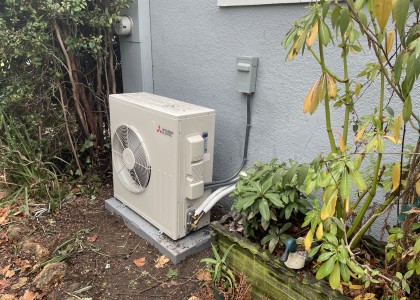As gas and electric utilities increasingly rely on energy efficiency as a resource, innovative ways to evaluate its impacts are emerging. Our new report Recent Developments in Energy Efficiency Evaluation, Measurement, and Verification presents examples of what pioneering states and utilities are doing to address challenges and take steps to evolve in a changing utility landscape.
Over the past decade the use of energy efficiency as a utility resource has increased considerably. Consequently, rigorous evaluation, measurement, and verification (EM&V) has gained importance as a way to help ensure that the resource is valid and the impacts are appropriately valued. ACEEE’s report assesses and documents recent developments in the field.
One of the most visible trends affecting EM&V is the proliferation of advanced technologies for generating and analyzing large amounts of energy consumption data. Particularly significant is the widespread implementation of advanced metering infrastructure (known as smart meters), together with other devices such as smart thermostats and various energy management systems. These technologies and the data they make available have made possible new approaches to energy data analytics, energy efficiency program designs, evaluation methods, and policy approaches.
We also identify states leading in EM&V. Not surprisingly, many states leading in energy efficiency also invest heavily in program evaluation. For example, Massachusetts and California are consistent leaders in utility energy efficiency as well as EM&V policy and regulation. Several other states are tackling evaluation challenges and developing refined and collaborative approaches.
In a closely related development, often as a result of state policies, utilities are examining how they can best employ advanced measurement and verification, often called “M&V 2.0,” to estimate savings, better understand and engage customers, and target program marketing more effectively. In certain program applications of M&V 2.0, energy savings can be determined faster and in more detail. This faster performance feedback is enabling more agile and responsive program implementation.
Another trend is the growth and enhancement of technical reference manuals (TRMs). TRMs are centralized repositories of energy efficiency savings values, methodologies, and parameters, usually built and maintained at the state level. More states and regions are adopting TRMs and enhancing the accuracy and consistency of their deemed savings values. They are benefitting from transparent, collaborative multi-stakeholder efforts to update efficiency measures and calibrate savings values. Jurisdictions are increasingly using the results from program evaluations to update TRMs in a cycle of continuous improvement.
Some aspects of EM&V practice have not changed as rapidly but are also important. To estimate energy savings, we need to first determine the baseline of energy consumption, which considers how much energy would have been used without efficiency measures. These baseline methods are crucial to EM&V’s work in a changing world, and we examine one such approach — the common practice baseline (CPB).
The methodologies and technologies used to apply EM&V to the energy efficiency resource are complex and rapidly evolving. Our report highlights recent developments in a few key areas of EM&V. The community faces many other challenges and opportunities as the utility industry evolves, and Lawrence Berkeley National Laboratory recently reviewed them. While new techniques and approaches emerge over time, the fundamental objectives for EM&V are enduring: to document impacts and provide information for program improvement. Given the vast energy efficiency resources available, the future looks bright if EM&V policy and practice continue to advance.




